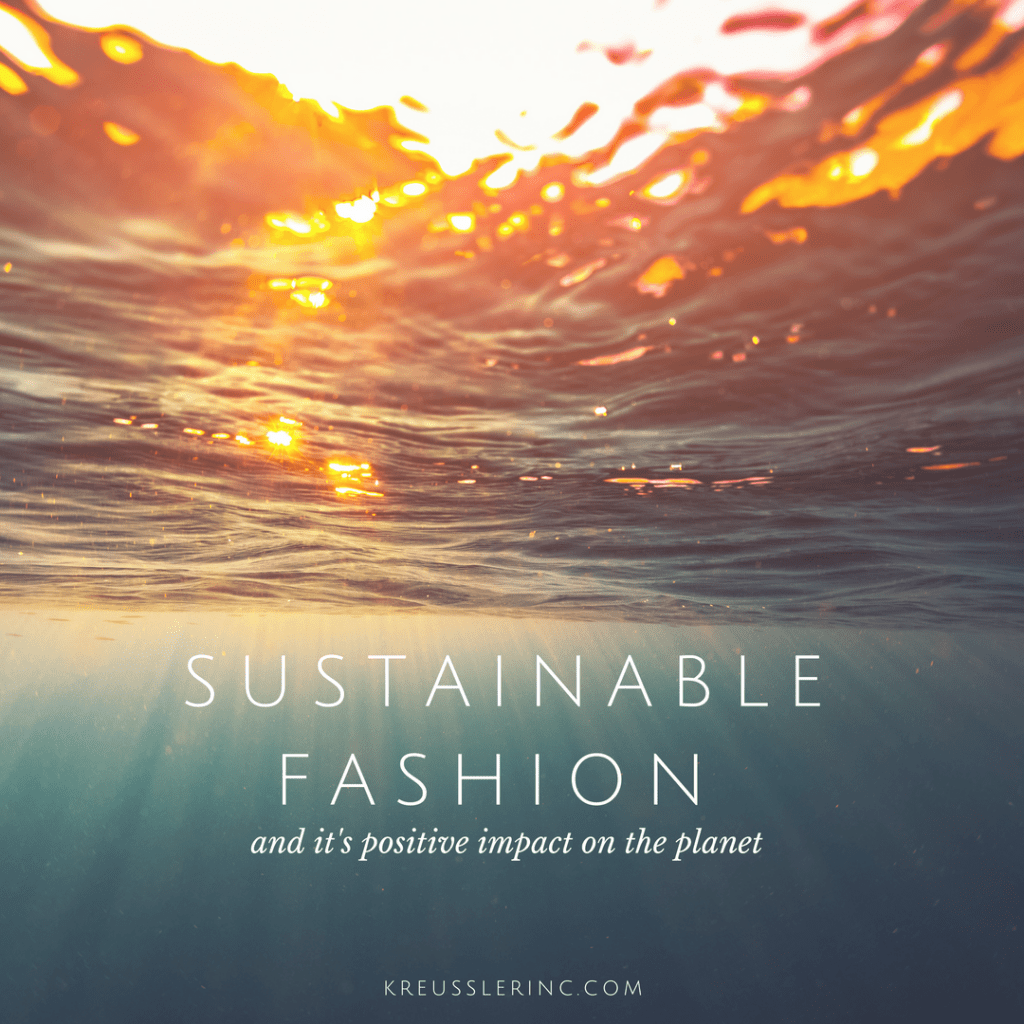Sustainable fashion is a relatively new evolution. There are many unknowns about the effects of ‘fast fashion,’ and how it impacts on the planet. Fast fashion is a contemporary term used by fashion retailers to express that designs move from catwalk quickly to capture current fashion trends. The counter movement, slow fashion, focuses on classic styles and sustainable practices.
Most consumers have no idea of the impact that buying a new purse or another pair of jeans has on the environment. Did you know that it takes more than 5,000 gallons of water to manufacture just one T-shirt and a pair of jeans? [source]
Ecowatch says, “When we think of pollution, we envision coal power plants, strip-mined mountaintops, and raw sewage piped into our waterways. We don’t often think of the shirts on our backs. However, the overall impact the apparel industry has on our planet is quite grim.
Fashion is a complicated business involving long and varied supply chains of production, raw material, textile manufacture, clothing construction, shipping, retail, use and ultimate disposal of the garment.”
One of the brands at the forefront of sustainable fashion is Stella McCartney. All of their accessories are made from cruelty-free materials. They create bags of vegan leather as well as use recycled and bio-based products whenever possible. Their company mission statement is:
We are agents of change. We challenge and push boundaries to make luxurious products in a way that is fit for the world we live in today and the future: beautiful and sustainable. No compromises.
Each decision we make is a symbol of our commitment to defining what the future of fashion looks like. From never using leather or fur and pioneering new alternative materials to utilizing cutting-edge technologies, pushing towards circularity, protecting ancient and endangered forests and measuring our impact with ground-breaking tools.
Another sustainable leader in fashion is adidas. adidas is the only company in the sporting goods industry which publishes a Sustainability Report on an annual basis. Their ultimate goal is to have a product that delivers high performance, but which is also made sustainably. A few of their fantastic efforts:
- Banning plastic bags in all their stores in 2015.
- Partnering with the Parley for Oceans project and making shoes from plastic harvested from the ocean.
- A full running line featuring t-shirts, tanks, tights, skirts and shorts with 95% pattern efficiency (only 5% waste).
“The clothing you wear has a larger price tag than what you see when it’s hanging on the rack—it comes with costs to the environment, too. Unsustainable dyeing and processing practices in the fashion industry have had a major impact on water pollution.”
WATCH: Detox: How Fashion Is Cleaning Up Its Act
“Odds are, your mobile phone is less than two years old. Today’s economy is built on a “fast turnover” principle. The faster we replace our gadgets, the better – not only our phones but most items we consume.
This leads to a staggering inefficiency in the way we manage the Earth’s resources, with increased pollution, loss of ecosystems and substantial losses of value with each product disposed of. ” From The Guardian.
What can one person do to make a difference?
- Recycle your clothing.
- Take time to repair clothes with a missing button or a broken zipper.
- Find another family to hand-down clothes that no longer fit your kids.
- Upcycle vintage finds with new trim.
- Shop at second-hand stores.
- Turn found treasures into new pieces.
- Support brands that are making sustainable choices.
- Research before purchasing.
I hope this gave you some food for thought for your fashion choices. I know that I learned a lot from researching this topic and will strive to make more informed decisions. Will you do the same?
Please share with your community to help spread the word.



